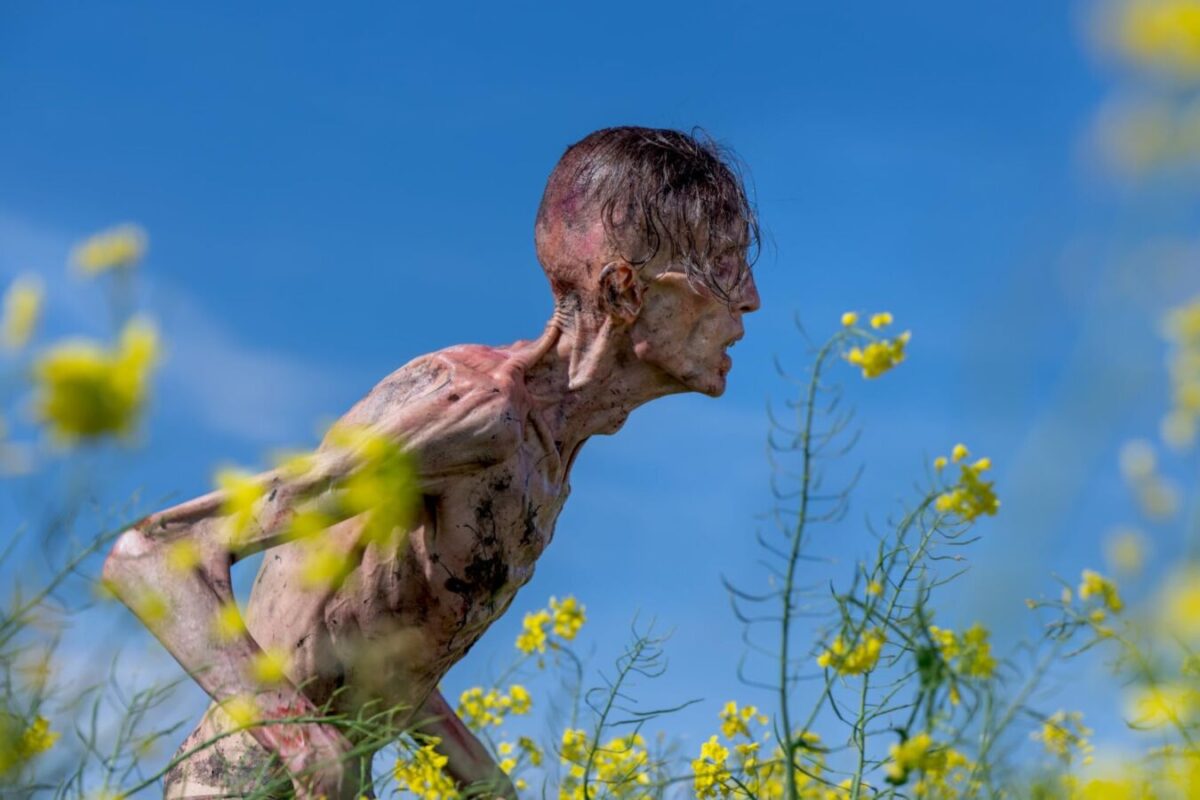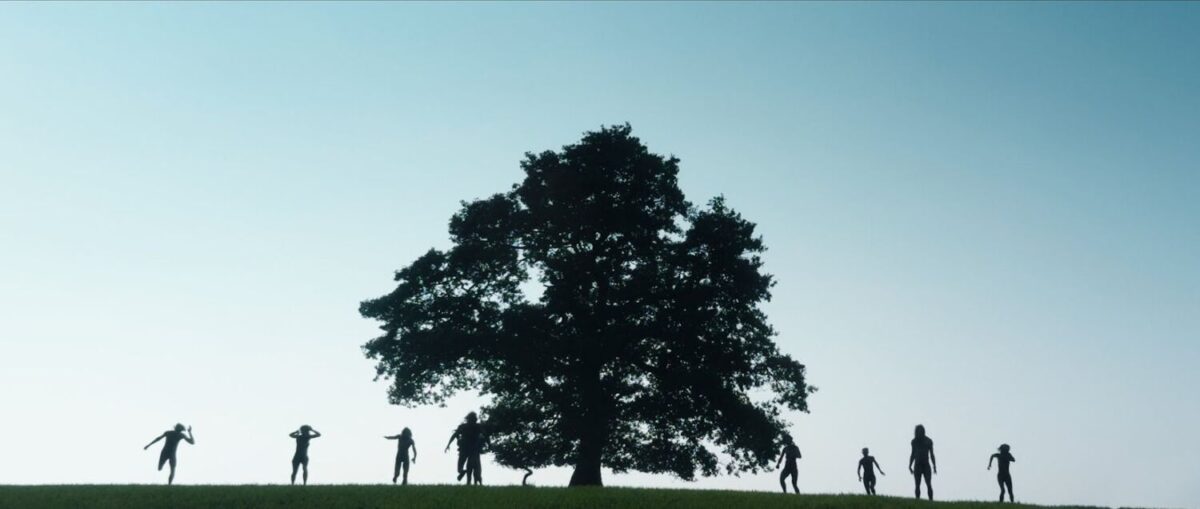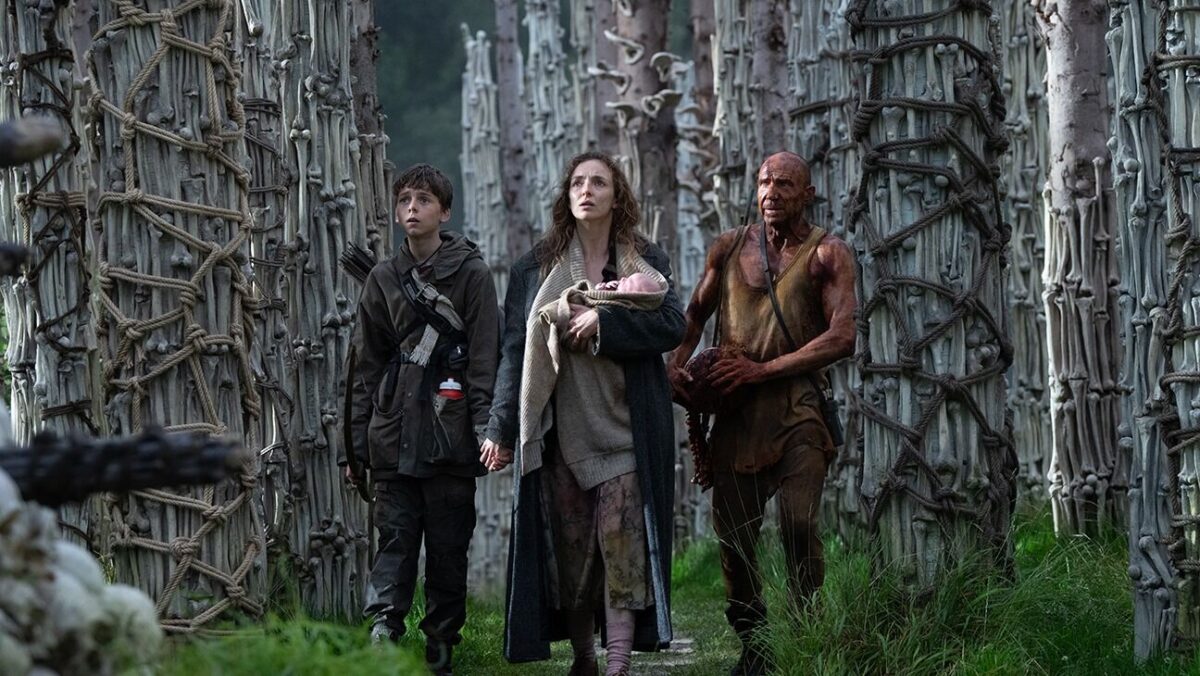
Long before 28 Days Later (2002) revitalized the zombie film genre, English poet Rudyard Kipling released the poem, “Boots.”
Don’t – don’t – don’t – don’t – look at what’s in front of you – / (Boots – boots – boots – boots – boots movin’ up and down again!) / Men – men – men – men – men go mad with watchin’ em / And there’s no discharge in war! Count – count – count – count the bullets in the bandoliers / If – your – eyes – drop – they – will get atop o’ you!

This poem is prominently featured in the trailers for 28 Years Later, setting a dark, tense atmosphere that aligns perfectly with a world devastated by the infected (director Danny Boyle opts for this term over ‘zombies’), and hinting at various themes and parallels throughout the film.
The film presents a rewarding experience, consistently infusing a sense of post-apocalyptic gloom and suspense throughout its duration. Beneath the surface, it explores themes of morality, the inevitability of death, and the need to come to terms with it. Like its predecessor, this long-awaited third installment merges elements of a zombie thriller, an exhilarating adventure, and a deep human story, showcasing strong performances that highlight its emotional essence, even if it occasionally falters.
This sequel marks a reunion of Boyle (Slumdog Millionaire, Trainspotting), screenwriter Alex Garland (Ex Machina, Civil War), and cinematographer Anthony Dod Mantle after 23 years (the 2007 sequel, 28 Weeks Later, featured a different team). The latest installment quickly establishes its premise: the containment of the Rage virus to the U.K. has led to a new generation of survivors on a small island connected to the mainland by a heavily guarded footbridge.

The story centers around 12-year-old Spike, portrayed by A New Breed of Criminal’s Alfie Williams, who set out on his first hunting expedition to gather supplies for his community, with his father Jamie (Aaron Taylor-Johnson, Kraven the Hunter) by his side. Predictably, things go sideways, leading them to confront various infected, from slow crawlers and fast ragers to their intelligent, formidable leader: the Alpha.
Meanwhile, Spike’s mother, Isla (Jodie Comer, Killing Eve), is bedridden with an undisclosed illness that causes memory lapses. Jamie’s distant approach to her creates tension between him and Spike, particularly after Spike uncovers a potential remedy for Isla, necessitating a trip back to the mainland. This initiates a new chapter in their journey, forming the basis of a coming-of-age narrative amidst the desolate world.
Despite his youth, Williams effectively captures attention, balancing vulnerability with a protective instinct. His concerns about his strength and the fear of failure add depth and authenticity to his character as Spike, who nonetheless has moments of hesitation. 28 Years Later often reminds its audience that such human flaws are completely normal.

This human touch extends to Isla and Dr. Kelson (Ralph Fiennes from the Harry Potter series), another survivor with a quirky personality. Comer seamlessly integrates into her role, sharing a powerful on-screen connection with Williams and delivering a heartfelt performance filled with emotion, fragmented memories, and a mother’s deep love. Fiennes portrays a kind-hearted yet eccentric character who honors mortality in a unique way, imparting a poignant lesson rooted in the Latin expression memento mori or, “remember that you must die.”
This emotional core echoes the spirit of 28 Days Later, and the threequel ensures it carries forward relevant themes. While the original tapped into early 2000s fears surrounding deadly viruses, contemporary inspirations include Brexit—the U.K.’s exit from the European Union—and the COVID-19 pandemic, underpinning the isolated setting of the island and its community.
The film also boasts stylized cinematography and editing reminiscent of Boyle’s 1996 black comedy, Trainspotting. Primarily shot on the iPhone 15 Max using various cameras—including action cameras and drones—28 Years Later presents a dynamic visual language, filled with gritty night-vision reds and clips from the 1944 version of Shakespeare’s Henry V, all interwoven with the haunting recitation of “Boots,” the poem referenced earlier, making for some striking sequences.

The frenetic editing, characterized by quick cuts and unusual camera angles, effectively evokes feelings of paranoia and anxiety. However, it occasionally stumbles, particularly when utilizing the bullet-time effect, which became famous through 1999’s The Matrix. In this film, the freeze-frame technique appears after scoring a successful hit on an infected’s weak spot, attempting to echo the shift from first- to third-person perspectives in video games. Unfortunately, this technique sometimes disrupts the film’s flow and continuity, and the dated quality of some archival footage contrasts sharply with the modern cinematography, even as it aims for a rough, authentic look.
Speaking of video games, familiar visuals of infected hordes might remind fans of franchises like Left 4 Dead 2 (L4D2) and The Last of Us. Building on the original’s introduction of quick zombies that revitalized the genre, the survival thriller returns alongside two new classes of infected: the Slow Lows, unsettling, swollen crawlers who consume insects to stay alive…
(think of the Boomer from L4D2) – an clever nod to “Boots” features one of them gnawing on shoelaces from a, you guessed it, boot – along with the Alphas.

As noted earlier, the Alphas possess greater intelligence and strength than regular zombies, enduring multiple arrows in their bodies without succumbing. These formidable, towering creatures can be compared to titans from Attack on Titan, though they aren’t invulnerable, requiring significant effort to defeat. For instance, an Alpha named Samson (Chi Lewis-Parry) relentlessly pursues Spike, showcasing his raw power by tearing a soldier’s head off, spine included, using only his hands.
And there’s much more in store. 28 Years Later offers a satisfying mix of blood, violence, and gruesome scenes, whether it’s gory guts, blood splatters, or intense combat. These violent moments are frequently framed by high-tension chase sequences and nail-biting suspense, which are its standout features. The film expertly pulls off jump scares, lulling viewers into a sense of calm before delivering startling surprises that effectively communicate the characters’ primal fears.
Amid the terror, (blood) spills, and excitement, there are moments of humor as well. Primarily through Swedish NATO soldier Erik Sundqvist (Edvin Ryding, Young Royals), these lighter threads offer a refreshing contrast, reminding us to appreciate life’s little joys, such as a petrol station sign reading ‘Hell’ instead of ‘Shell’ in the film. The humor often hits the mark, even though the abrupt tonal shift in the final scene feels somewhat jarring.
28 Years Later isn’t flawless. The bold, experimental style of its dynamic camera work and editing may put off some viewers, and its CGI for explosions could use more polish. While the film expands on the world-building and backstory of the infected, not all questions are satisfactorily answered. Nevertheless, these shortcomings don’t significantly detract from the rich legacy the franchise has built over the years – in fact, some might argue they add a unique charm to the overall experience.

In an overly crowded and expanding genre, Boyle’s latest film shines with its humanistic approach that will serve as a contemplation of morality and mortality, even 28 days, weeks, or years down the line – and beyond, as Candyman director Nia DaCosta is set to helm the follow-up, 28 Years Later: The Bone Temple.
The post 28 Years Later – Review appeared first on Geek Culture.


